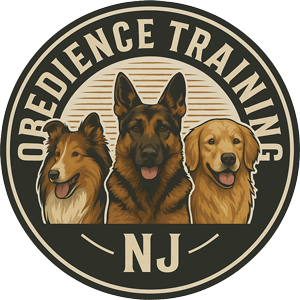Bringing home a cute puppy is a heartwarming moment—but those floppy ears come with puppy chaos too. From accidents to chewing, whining, and streaks of adorable mischief, it’s easy to hope they’ll simply grow out of it. In reality, puppy training—including crate training, leash manners, and housebreaking—must begin early to prevent those behaviors from becoming long-term puppy behavior problems.
Why Early Puppy Obedience Training Matters
Training isn’t a straight line. One day your pup may respond like a dog training genius, and the next, act like they’ve never even heard “sit.” Puppies are smart, sometimes stubborn—especially when cuteness tempts us into overlooking misbehavior. But without positive reinforcement training, those habits can deepen.
Start training early to shape your puppy’s behavior. Setting clear expectations now means a smoother path to obedience later.
Crate Training: Building Safety, Independence & House Manners
Crate training is key for puppy training success. The initial 48–72 hours may be challenging—expect whining or fussing. Resist letting them out every time; that teaches them that complaining opens doors. Instead, ensure they’ve had exercise and a potty break before crate time and stay consistent.
A well-crate-trained puppy associates the crate with rest, safety, and rebuilding housebreaking foundations, reducing separation anxiety and helping with grooming a calmer, more relaxed family dog.
Leash Manners Matter Early
Puppies don’t instinctively know how to walk on a leash—you need to teach it. Let your pup drag a short leash indoors to get used to the feel. Then reward gentle walking toward a hidden treat.
Good leash training is vital for a dog’s health and your peace of mind. Whether it’s a large breed puppy growing into a strong adult, or a small dog that might leash-tangle, teaching proper leash manners now prevents stressful struggles later.
Stopping Puppy Mouthing with Gentle Training
All pups teethe and explore with their mouths—but allowing indiscriminate mouthing can lead to painful habits in adult dogs. Instead of pulling back when your pup nips, gently push your hand toward his mouth. When he releases, redirect him to chew toys. This teaches bite inhibition and supports puppy obedience training in a positive, non-confrontational way.
Trained vs. Just Well-Behaved
A calm puppy isn’t necessarily trained. Temperament may make them appear well-behaved initially, but without structured training and consistent leadership, even the gentlest dogs will test boundaries with time. Puppy obedience classes or a structured training routine help ensure they respond reliably—even when distractions arise.
The Benefits of “Good Stress” in Training
Some owners worry that correcting a puppy adds stress—but controlled, predictable feedback builds resilience. Mother dogs model this naturally. Brief, consistent corrections teach puppies that the world continues even when they don’t get their way. This helps reduce overall anxiety and builds confidence—an essential foundation for a well-adjusted dog.
Long-Term Rewards of Early Training
- Puppies who receive early, consistent training:
- Require fewer corrections as adults
- Are safer and easier on public outings
- Build stronger bonds with owners through clear communication
- Are less anxious because they understand expectations
Early balanced dog training translates to a smoother life for both pup and owner.
Final Thoughts: How to Love Your Puppy and Train at the Same Time
Puppies tug at our hearts with their floppy ears and goofy antics. But the greatest act of love is guiding them through positive puppy training to ensure safety, trust, and a well-behaved foundation. Combining gentle handling with clear structure—and resisting the urge to let temporary stress slow training—creates secure, confident dogs ready for life’s adventures.

